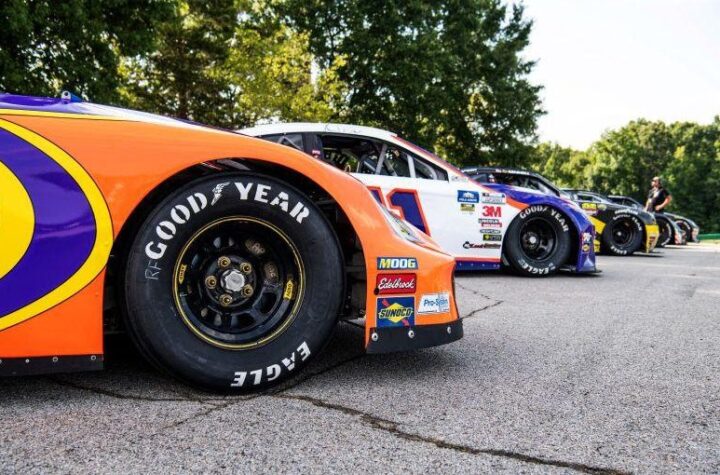
Telematics, infotainment and location-aware applications are becoming standard accessories in new vehicles. The challenge for engineers is to provide seamless integration between the infotainment system, and Smartphone features such as SMS text and e-mail – all without compromising driver safety.
One of the leaders in the field is HARMAN. Automotive Industries (AI) asked Rick Kreifeldt, vice president Global Automotive Research and Innovation at HARMAN, what he sees as one of the major challenges facing designers of in-vehicle infotainment systems.
Kreifeldt: If we don’t find the way to ease the interaction between the person and infotainment system, then we can’t really bring any more content or information. I cannot read more on my display. I can’t do more with my hands. This is where we see voice as a key enabler. A solution where you have a conversation with your system. Where you say things like: “find me the closest gas station” the way you think it, instead of giving commands. This is one of the big things we are working with Nuance on. We are pioneering solutions to develop intuitive, intelligent voice solutions for today’s connected In-Car Infotainment.
AI: In January 2011, you announced your intention in collaboration with Sierra Wireless to bring automotive customers the first 4G broadband connectivity. How is the collaboration going to work?
Kreifeldt: The connected car is here already! It’s just too expensive. We see 4G as a key enabler to bring the cost down. We will also get an improved infrastructure as people roll this out, and there are fewer dropped connections. Sierra Wireless is a leading supplier of modules with their AirPrime LTE solution, and HARMAN is a leader in integrating wireless technologies into the vehicle. We provide the experience needed to bring this exciting technology into a car traveling at highway speeds. This would include real-time mapping and traffic updates for drivers, and a variety of new services for passengers, with full Internet access shared among multiple devices.
AI: What solutions do you offer for the electric and hybrid segments?
Kreifeldt: “Green” is a major focus for our company. It is not only good business, but it also is the responsible thing to do. As we go more and more into hybrid vehicles we can’t just ask for more power for the infotainment or audio system. Our first GreenEdge systems focused on audio, where we don’t want to compromise on performance but we want to really dramatically lower the power. We have also developed GreenEdge infotainment where we have three times the computing performance for 2/3 the power.
Working with Lotus Engineering, we developed pioneering HALOsonic acoustic technology perfect for the growing number of electric and hybrid vehicle models. To address concerns and impending legislation over the virtually silent – but potentially dangerous – mode of such cars, HALOsonic solutions generate authentic external engine sounds, making driving safer for pedestrians and other road users, whilst enhancing the driving experience.
AI: HARMAN’s Aha Radio was selected by Pioneer as Interactive Entertainment Platform in their Flagship Navigation Systems. What is Aha?
Kreifeldt: Fumbling through Smartphone applications in your car to read the latest updates from friends on Facebook, or find the nearest outlet of your favorite coffee shop, is dangerously distracting. Aha Radio turns your favorite things on the Web into interactive, on-demand radio stations. Listen to your Facebook friends’ status updates, the latest celebrity Tweets, your favorite podcasts, and more while you keep your eyes safely on the road. Aha Radio allows drivers and passengers to listen to personalized traffic reports on the roads ahead of them; and get broadcast information on the closest restaurant.
In Geneva, together with Frank Rinderknecht’s Rinspeed, we provided a glimpse into the future of mobile communications. For the Rinspeed BamBoo concept car, HARMAN has developed a solution tailor-made for a generation of users that has grown up with Web 2.0, multifunctional Smartphones and tablet PCs. Using our scalable infotainment platform as the core, a number of networking and connectivity options has been integrated into the system to safely deliver personalized, on demand, and interactive content, thereby bringing the social concept vehicle to life.
To support the BamBoo’s fun and social personality concept, HARMAN’s infotainment system includes an integrated Wi-Fi connection that connects the vehicle to the people and places around it via the Internet. HARMAN uses advanced data streaming protocols to allow the car to share digital music with those in and around the BamBoo.
It will provide seamless connectivity between Android-based smartphones and tablet computers from HTC Corporation, and the HARMAN in-dash head unit. Information such as e-mails and SMS texts are seamlessly converted from text-to-speech, allowing drivers to keep their eyes on the road and hands on the wheel.
And to ensure the fun doesn’t stop in the driveway, HARMAN has included a wireless
DLNA connection from the HARMAN in-dash system to a HARMAN home media center – literally keeping the music going, wherever you are. HARMAN audio technologies make the electrically-propelled BamBoo a model of “ecotainment,” along with HARMAN’s GreenEdege energy efficient audio solutions and HALOsonic technologies delivering greater safety, energy efficiency, and enhanced driving enjoyment.
AI: What was the idea behind the new docking navigation system launched with Mercedes-Benz?
We wanted to make the system more upgradeable. The concept is a navigation solution that incorporates a flexible upgradeable device with the convenience of complete driver cockpit integration. We achieved this with the new Becker MAP PILOT navigation system, premiering in the new Mercedes-Benz SLK and in the new generation of C-Class. In the future we’ll have other versions of this system with other features. The system will allow customers to get new features for the car even three years down the line.
AI: Please tell us about HARMAN’s QuantumLogic surround technology for your JBL Professional audio system in the new Ferrari FF.
Kreifeldt: This was an outstanding collaboration between HARMAN and Ferrari because the engineers from the two companies share a dedication to performance excellence. QuantumLogic surround technology precisely analyzes any audio signal and separates voices, instrument groups, and spatial information into separate data streams. QuantumLogic Surround then recombines the individual data into a precise, multi-channel soundstage, and in this way generates an authentic sound experience. It gives you the ability to take individual instruments and really position them around the sound stage and it also gives you the option to be either onstage or in the audience. The system is also highly suited for compressed material such as MP3 and provides an exceptional experience with your portable media.
AI: What else can we expect from HARMAN in the near future?
Kreifeldt: The Aha acquisition shows that in the future we can bring a lot more Cloud-based services. You will see a large extension of the Aha platform first and also a way to bring internet services more quickly into the vehicles as well as downloadable applications. What we are showing in Geneva is the best of all worlds. We can either have an app to download to the head unit, or an app on the Smartphone, or SMS/e-mail – talking to your head unit, , or you can push it all the way to the cloud Aha platform. We have the most comprehensive solution for bringing on-line services into the car with the right point of integration for each service..












More Stories
Automotive Industries (AI) Newsletter April 2025
Bangkok International Motor Show 2025 – The Talk of Sensuous Automotive
GlobalLogic Pioneering Software-Defined Vehicles, AI Innovation, and Sustainable Solutions for the Future of Automotive Mobility